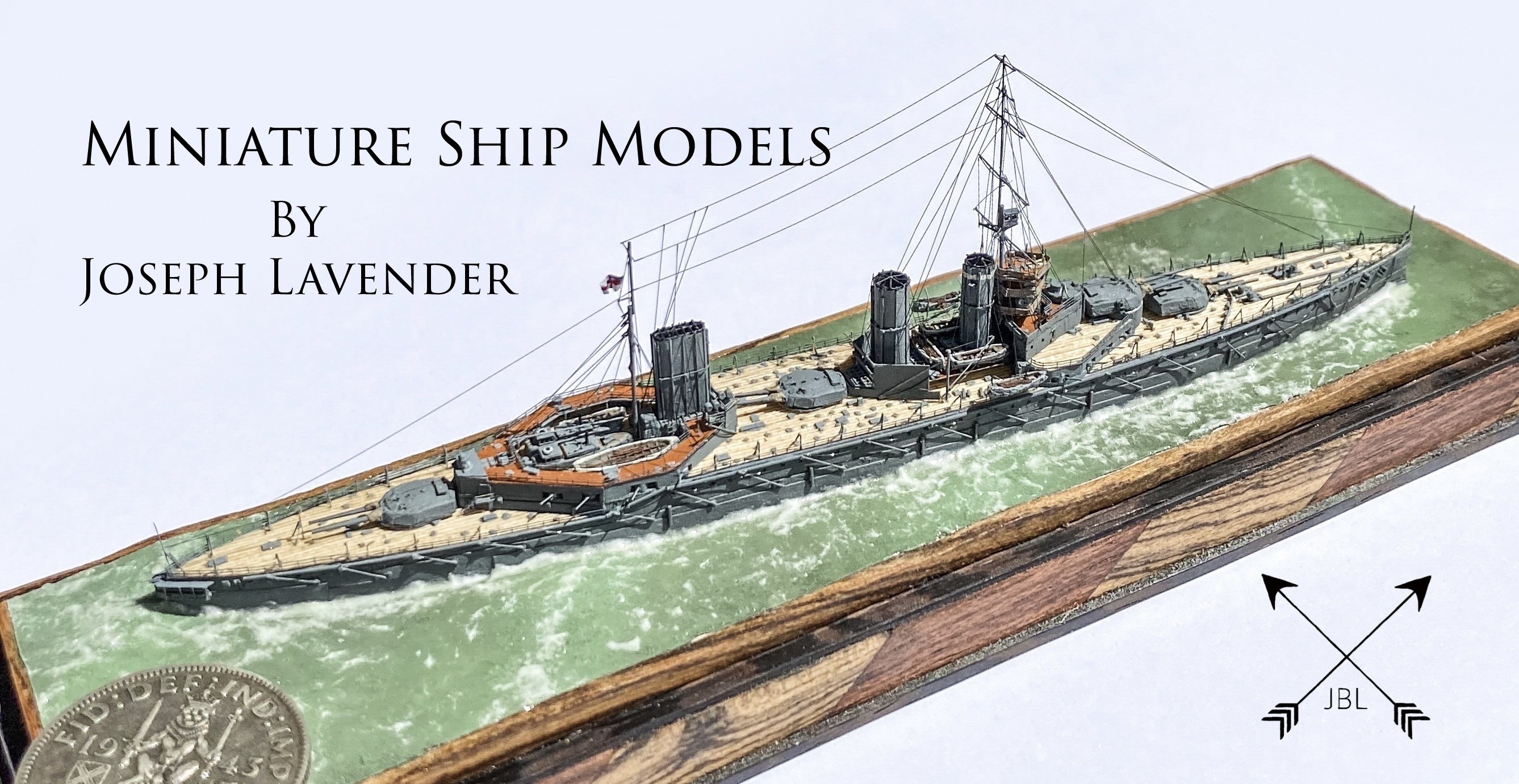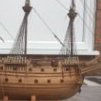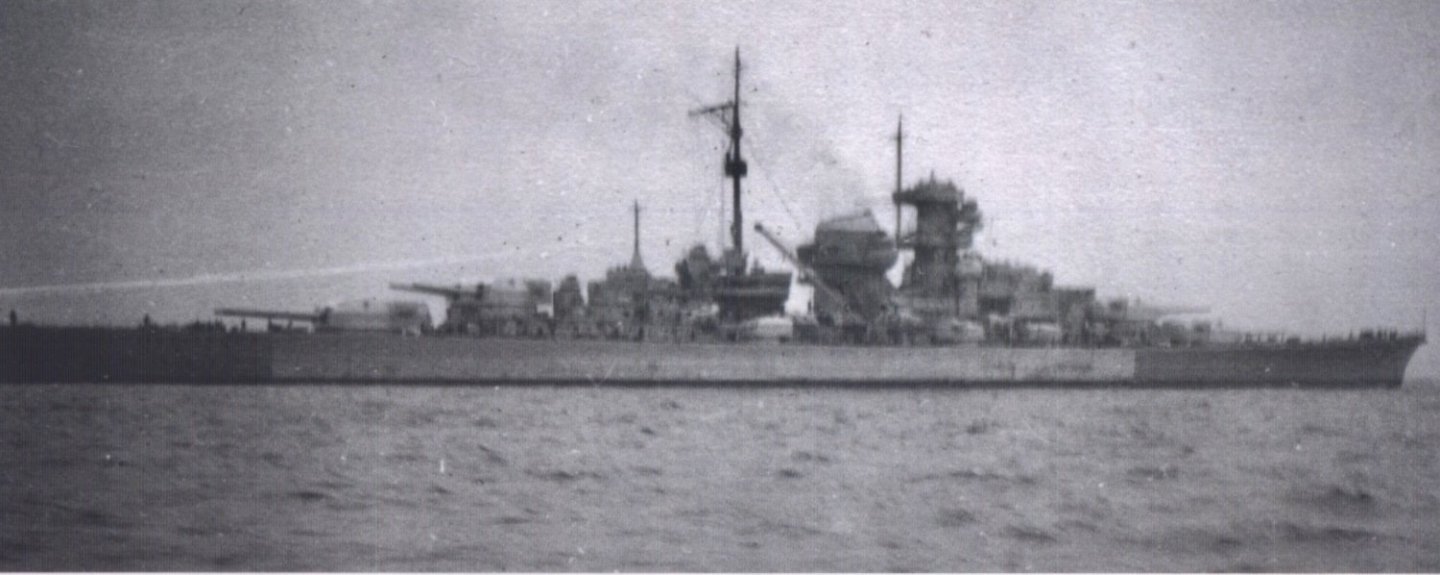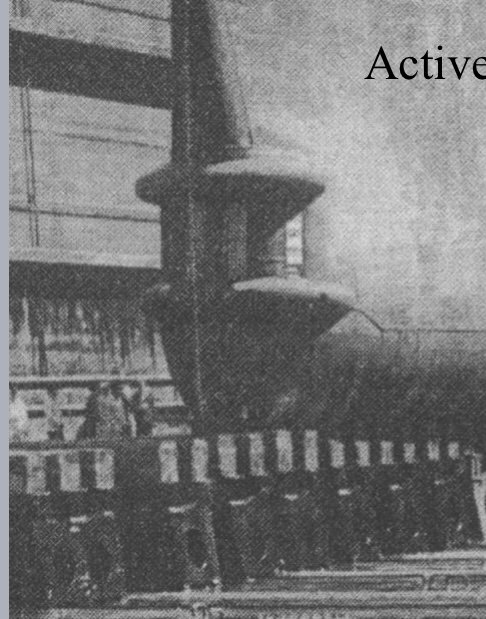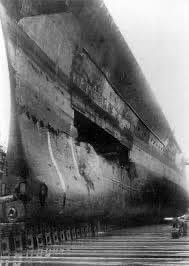-
Posts
449 -
Joined
-
Last visited
-
 Jeff59 reacted to a post in a topic:
Bismarck by madtatt - FINISHED – Trumpeter with Pontos set – 1:200 - PLASTIC
Jeff59 reacted to a post in a topic:
Bismarck by madtatt - FINISHED – Trumpeter with Pontos set – 1:200 - PLASTIC
-
 NavyShooter reacted to a post in a topic:
Bismarck by madtatt - FINISHED – Trumpeter with Pontos set – 1:200 - PLASTIC
NavyShooter reacted to a post in a topic:
Bismarck by madtatt - FINISHED – Trumpeter with Pontos set – 1:200 - PLASTIC
-
 catopower reacted to a post in a topic:
Anyone out there working on a card model?
catopower reacted to a post in a topic:
Anyone out there working on a card model?
-
 Canute reacted to a post in a topic:
Bismarck by madtatt - FINISHED – Trumpeter with Pontos set – 1:200 - PLASTIC
Canute reacted to a post in a topic:
Bismarck by madtatt - FINISHED – Trumpeter with Pontos set – 1:200 - PLASTIC
-
 madtatt reacted to a post in a topic:
Bismarck by madtatt - FINISHED – Trumpeter with Pontos set – 1:200 - PLASTIC
madtatt reacted to a post in a topic:
Bismarck by madtatt - FINISHED – Trumpeter with Pontos set – 1:200 - PLASTIC
-
No worries. Yeah, in 1940 she wouldn't have her S-anlage oscillators or the knockouts for them either. Also, her screws would be the variable pitch type. They were testing different angles on the blades to decide what to cast as the service screws. They used a single reduction gear and the screws turned really fast at full-chat, 270rpm in fact, and they were trying to get the cavitation under control. It's funny the germans thought double reduction gear was too complex... I can't remember if I mentioned it above or not, but it is unknown if they installed the single piece screws, there is no evidence they did, but she was in and out of dry dock a lot in the spring of 41, so it's possible. Also, you'll need to leave off the rangefinders, and half the 105mm gun mounts for the September fit. She wore an experimental camouflage starting in October 1940, so if you want to paint her in that I have diagrams and photos. I don't think I've ever seen anyone model the ship in that scheme. It'd be the same equipment fit, but it'd be fun to see. The S-anlage equipment installed on Tirpitz is better documented. I have copies of the original KM drawings from '41 which show how the equipment was set up. Neat stuff. I've also heard a rumor that the S-anlage documents relating to Bismarck were found in the Bundesarchiv last year, or year before. I don't see them in the master archive list, but they may be in with other documents, so who knows.
-
 madtatt reacted to a post in a topic:
Bismarck by madtatt - FINISHED – Trumpeter with Pontos set – 1:200 - PLASTIC
madtatt reacted to a post in a topic:
Bismarck by madtatt - FINISHED – Trumpeter with Pontos set – 1:200 - PLASTIC
-
 madtatt reacted to a post in a topic:
Bismarck by madtatt - FINISHED – Trumpeter with Pontos set – 1:200 - PLASTIC
madtatt reacted to a post in a topic:
Bismarck by madtatt - FINISHED – Trumpeter with Pontos set – 1:200 - PLASTIC
-
 Canute reacted to a post in a topic:
Bismarck by madtatt - FINISHED – Trumpeter with Pontos set – 1:200 - PLASTIC
Canute reacted to a post in a topic:
Bismarck by madtatt - FINISHED – Trumpeter with Pontos set – 1:200 - PLASTIC
-
 Canute reacted to a post in a topic:
Bismarck by madtatt - FINISHED – Trumpeter with Pontos set – 1:200 - PLASTIC
Canute reacted to a post in a topic:
Bismarck by madtatt - FINISHED – Trumpeter with Pontos set – 1:200 - PLASTIC
-
Oh and don’t forget the depth charge racks and chlorosulfonic acid canisters stored on the main deck behind D turret. Two details oft missed. Bismarck carried 18 depth charges. Two racks were installed at the stern, each carrying 3 WBDs (water bombs). These weren’t for ASW, they were used to confuse enemy fall of shot spotting.
-
The system on the bow you’re referring to is S-Anlage active sonar. The photos posted here predate the installation. The photo of the ship in dry dock, the colorized one, that was taken in the autumn of 1940, and the S-anlage equipment was likely installed around December. Details of this are sketchy due to the enormous secrecy the KM placed around all of its sonar, EMII, and EMIII devices. Here is an excerpt from my book: Active and Passive Sound Systems Codenamed Sonderfernsteueranlage (special remote control system), the Bismarck was fitted with the S-Anlage sonar system, an early active and passive sonar designed to detect ships, submarines, tethered mines, and even incoming torpedoes. The installation was located in Section XVI of the ship, with the main transmitting and receiving unit housed in a cut-out at the bulbous bow. In addition to this forward installation, two more oscillators were positioned further back on either side of the bow. The bow section itself could swivel up to 270°, providing a broad underwater scanning arc. The S-Anlage operated by emitting a horizontal sound pulse and then recording the returning echoes, a principle essentially identical to later sonar technology. Information was displayed on a Braun tube (an early cathode-ray tube screen), where the distance to a detected object was measured in hectometers (1 hectometer = 100 meters). The system offered a maximum range of 15,000 meters (15 km) and an accuracy of ±2°, making it effective for determining both range and bearing. In practice, the sonar was capable of identifying a variety of underwater threats, including submarines, surface ships, tethered mines, and torpedoes. Against torpedoes, in particular, it theoretically gave Bismarck some capacity to respond to incoming attacks. However, sonar technology in the early 1940s remained primitive, lacking the precision and real-time tracking ability of modern systems. The equipment was developed by several manufacturers, including Atlas Werke (Bremen), Elac (Kiel), and AEG, although it is uncertain which company supplied the unit actually installed on Bismarck. While the S-Anlage represented a significant step forward, it was not advanced enough to deliver the kind of comprehensive situational awareness available with later generations of sonar. Nevertheless, its combination of active and passive capability, together with its swiveling detection head, marked it as a forerunner of more modern naval sonar systems. No known photographs of Bismarck’s S-Anlage installation exist. Evidence suggests it was fitted in very late 1940; surviving photographs of the ship in drydock are either from before its installation or were deliberately censored to conceal the equipment. So if you’re modeling Bismarck in 1941, she should be fitted with the S-Anlage in the bow. There is a grainy photo of the S-Anlage oscillators fitted to Lützow if you care to have a google. Also fitted at the same time (~December 1940) were new propellers, but no photos of these exist. The variable pitch screws were removed and single cast screws installed. If this wasn’t carried out in December it was done by February 1941.
-
 AJohnson reacted to a post in a topic:
Colours for HMS/HMAV Bounty
AJohnson reacted to a post in a topic:
Colours for HMS/HMAV Bounty
-
I just finished a series of paint scheme diagrams for my upcoming book, so if you need any help in this area, let me know.
-
I have a copy of S/Y Polaris plans in my archive, full size scans. Let me know if you need any further help.
- 206 replies
-
- Endurance
- Shackleton
-
(and 2 more)
Tagged with:
-
 Joe100 reacted to a post in a topic:
Bismarck by Ian B - Amati - 1/200
Joe100 reacted to a post in a topic:
Bismarck by Ian B - Amati - 1/200
-
Indeed, the bow waves were all different. They were doing a lot of experimenting with the Baltic scheme, and this was just another attempt to see which shape worked best.
-
I recently did a presentation to a university class on Bismarck, and I remarked that, adjusted for inflation, Bismarck cost $1.6billion. These capital ships were very well maintained, especially during the first half of the war. Some minimal color modulation will go a long way to help break up her slab sides and make her more appealing. Can’t wait to see what you do.
-
Looking good! Don’t go too heavy on the underwater weathering. They ran her aground prior to Rhine Exercise and she was drydocked for inspection. The hull paint was touched up at this time too, so her bottom was mostly clean. She’d also been docked in December 1940 too, so no matter which period between December 1940 and her loss, she’s pretty clean underwater.
-

Bismarck greys?
Joe100 replied to Ian B's topic in Painting, finishing and weathering products and techniques
By the way, this is the experimental scheme from the fall of 1940. Only half of her heavy AA weapons have been fit, since the three-axis stabilized mounts weren’t ready yet, no rangefinders, etc. not her best look in my opinion. You can always tell Bismarck from Tirpitz by their funnel caps. Bismarck used an aluminized funnel cap for heat dissipation, and Tirpitz used a black funnel cap with heat resistant paint. -

Bismarck greys?
Joe100 replied to Ian B's topic in Painting, finishing and weathering products and techniques
The boot topping was indeed grey, a very dark grey, but grey nonetheless. Specifically, RAL 7016 Schiffsbodenfarb Ill. In some of the higher-resolution photos you can see the demarcation of the boot topping like and the black Baltic stripes. Boot topping paint was a harder-wearing paint than the rest of the ship’s hull, and in most cases even thicker than the hull antifouling paint since it had to take the scouring action of the waves. The KM paints, especially in the early part of the war, were very much standardized, so there wouldn’t be mich of a variation. The Germans were using grey for boot topping stripes as far back as 1910 when the Tropical schemes were dropped in favor of Scheme 9. Bismarck was painted in 3 distinct camouflage schemes prior to Rhine Exercise. The first was overall Scheme 9, then in October 1940 an experimental scheme was applied for a few weeks. Only a few photos of this scheme exist, it’s never modeled. After this she was painted back to Scheme 9, and then into the Baltic scheme. The Baltic scheme remained mostly the same but we know the turret roof colors were changed almost constantly. This was done for testing purposes and in some photos you can even see the few workers busily repainting them. Sometime after her final fit in either March or April 1941, she was again painted back to Scheme 9 before the Baltic stripes were reapplied for Rhine Exercise. This was probably for experimental purposes. -

Bismarck greys?
Joe100 replied to Ian B's topic in Painting, finishing and weathering products and techniques
Do you need the RAL numers? (Reichs Ausschuß für Lieferbedingungen und Gütesicherung) Bismarck used a variation of Scheme 9 which was introduced in May 1910. the light grey is RAL 7001 the medium grey is RAL 7000 and the dark grey is RAL 7024 for these colors, and the rest, I’d recommend the ScaleColors Kriegsmarine set. It’s the closest I’ve found to the originals, especially the anti-fouling mix the KM used. Don’t forget that the boot strip on km ships was GREY, and NOT black. I see this error all the time. The stripe itself is more of an anthracite grey or German grey. Very dark, but definitely not black. If you need more info, or if this wasn’t what you’re looking for, let me know. The Baltic camouflage scheme was found to be incredibly dangerous and it was abandoned completely by December 1941. The white stripes made excellent aiming points for Soviet submariners. -
Most of the people in that thread on KBismarck are friends of mine, however that information is nearly 20 years old now, and a lot has happened research wise since then. At that time it wasn’t known if Bismarck and Tirpitz carried S-Anlage, however the information about its installation has been found in German archives, so we have dates and specifications. The surface fleet was equipped with S-Anlage by the end of 1941
-
Hey DDP, Here is the photo of the equipment installed on Scheer Here we see the oscillators on Gneisenau In this photo of GU, it appears only the side oscillators are recessed. On SC, they installed bump guards, probably to at least alleviate some damage if she was grounded. Bismarck was run aground just before Rhine Exercise and had to be dry docked. This was to inspect the hull and to inspect her sensors for damage.
-
DDP, You’ve linked to some very old information there, and the photos of the launch in 1939 predate S-Anlage installation by almost 2 years. When that thread was posted at KBismarck, no one knew sonar had been fitted to Bismarck, this is new information within the past 8 years or so. The Schallanlage or S-Anlage active sonar was/is an extremely classified piece of equipment due to the fact the US used it as the basis for their submarine sonar after the war. Even today, not a huge amount is known. Research in this area is developing, and I just received the German archive box numbers containing information relevant to S-Anlage for Bismarck. I know someone who has quickly gone through them, and they state that sadly it’s just drawings and technical details, no photos. However this information will pin down dates and other technical details beyond what we already have. However, we do know Bismarck received her S-Anlage active sonar equipment in December 1940, which postdates the famous dry dock photos from October 1940, which is why the oscillators aren’t seen at the time. Mention is made of it exclusive to the GHG, so we do know it was installed and deployed for Rhine Exercise. Around this time Adm. Scheer received her S-Anlage sonar system, slightly before Bismarck, and we do have photos of that. I can share if they’re needed. S-Anlage active sonar had a range of about 9nm, maybe a bit further in colder waters. Few of Bismarck’s sensors were over the horizon, but a skilled GHG operator could and would pin down allied ships right down to the class. In summary, any model of Bismarck in 1941 should carry the 6 S-Anlage oscillators on the bow.
About us
Modelshipworld - Advancing Ship Modeling through Research
SSL Secured
Your security is important for us so this Website is SSL-Secured
NRG Mailing Address
Nautical Research Guild
237 South Lincoln Street
Westmont IL, 60559-1917
Model Ship World ® and the MSW logo are Registered Trademarks, and belong to the Nautical Research Guild (United States Patent and Trademark Office: No. 6,929,264 & No. 6,929,274, registered Dec. 20, 2022)
Helpful Links
About the NRG
If you enjoy building ship models that are historically accurate as well as beautiful, then The Nautical Research Guild (NRG) is just right for you.
The Guild is a non-profit educational organization whose mission is to “Advance Ship Modeling Through Research”. We provide support to our members in their efforts to raise the quality of their model ships.
The Nautical Research Guild has published our world-renowned quarterly magazine, The Nautical Research Journal, since 1955. The pages of the Journal are full of articles by accomplished ship modelers who show you how they create those exquisite details on their models, and by maritime historians who show you the correct details to build. The Journal is available in both print and digital editions. Go to the NRG web site (www.thenrg.org) to download a complimentary digital copy of the Journal. The NRG also publishes plan sets, books and compilations of back issues of the Journal and the former Ships in Scale and Model Ship Builder magazines.

